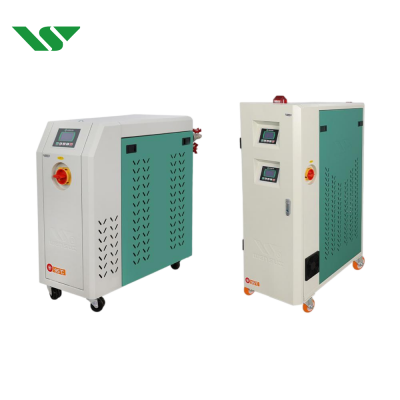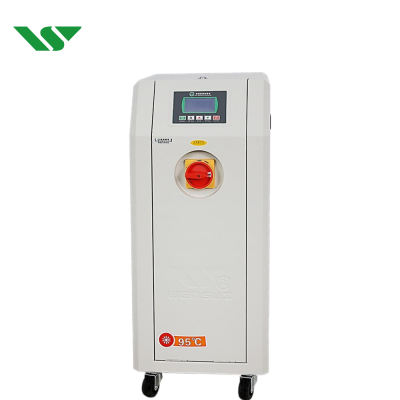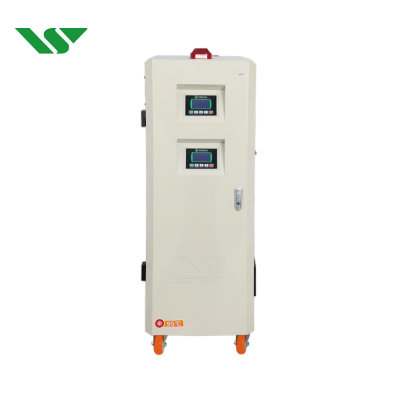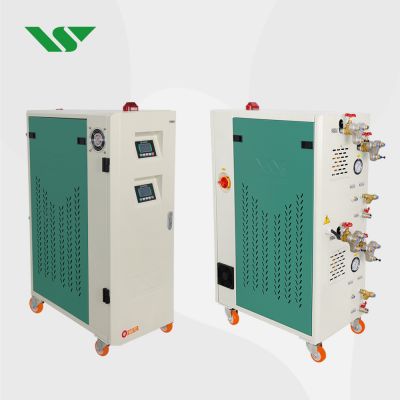What is Mold Temperature Control Machine ?
2024-04-24 Page view:
Precision Originally designed for injection mold temperature control, the mold temperature controller, also known as the mold temperature control machine, has witnessed a broader spectrum of applications with the advancement of the machinery sector. Today, these machines are predominantly categorized into water and oil temperature controllers, boasting a remarkable temperature control accuracy of ± 0.1 ° C

Versatile Applications in Various Industries Mold temperature controllers find extensive usage across diverse industries such as plastic molding, die-casting, rubber manufacturing, and chemical processing. These machines, often referred to as temperature control equipment, cater to both heating and cooling requirements.
Key Functions in the Plastic Industry In the plastic industry, mold temperature controllers play pivotal roles in:
1. Enhancing product molding efficiency
2. Minimizing defective product occurrences
3. Improving product appearance and mitigating defects
4. Accelerating production while conserving energy resources
Moreover, these controllers are indispensable in the die-casting sector, particularly in the fabrication of magnesium and aluminum alloys. Inconsistent mold temperatures can lead to dimensional irregularities and casting deformations, resulting in defects like thermal pressure, mold sticking, and surface imperfections. Such discrepancies also affect production timelines and mold longevity.
Boosting Efficiency in Modern Manufacturing To stay competitive in today's market landscape, businesses are increasingly adopting mold temperature controllers to streamline operations. These machines reduce mold preheating durations, enhance product surface quality, and facilitate automated production, consequently enhancing productivity.
Working Principle
A typical mold temperature controller comprises a water tank, heating/cooling system, power transmission mechanism, liquid level control system, temperature sensors, and injection ports. The system pumps hot fluid from the water tank, equipped with heaters and coolers, to the mold and then back to the tank. Temperature sensors relay data to the controller, which regulates the mold temperature accordingly.
Distinct Features of Water and Oil Type Controllers

Water-type mold temperature controllers offer:
1. Operating temperature range of 40 ℃ -180 ℃ with ± 1 ℃ accuracy 2.User-friendly microcomputer touch controls
3. Automatic startup exhaust
4. Display of outlet and return water temperatures
5. Optional mold water return function
6. Stainless steel pipelines for durability
7. Fault display for easy maintenance

Oil type controllers feature:
1. Touch-mode temperature control with ± 2 ℃ accuracy
2. Dual electric heating tubes for flexibility
3. Rapid heating and cooling cycles
4. Stainless steel electric heating cylinders
5. Comprehensive safety protection and fault indication system
Cooling Methods
Mold temperature machines employ direct and indirect cooling methods. Water-carrying controllers typically use direct cooling, while oil-carrying ones employ indirect cooling, often utilizing plate exchangers for cooling. Direct cooling is favored for its fast cooling rates, while indirect cooling is preferred for high-temperature applications due to safety considerations.

In conclusion, mold temperature controllers are indispensable assets across various industries. They offer precise temperature control and enhance production efficiency. Whether in plastic molding, die-casting, or chemical processing, these machines play a vital role in achieving optimal manufacturing outcomes.



